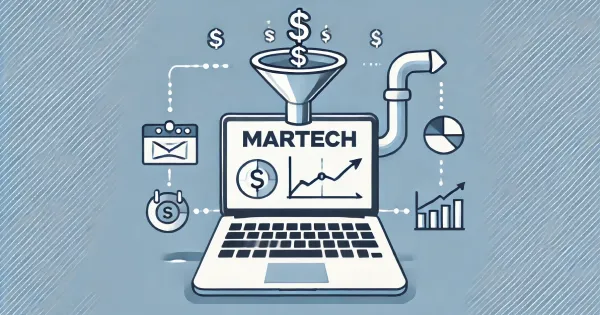5 Benefits of Long-Term Thinking in Business

It's common for businesses to only focus on quick profits and results today, instead of planning for the long-term future. But having a long-term mindset is important - not just for steady growth, but also to build a strong base that can handle market changes and shifts in the industry. Long-term thinking means looking beyond just the short-term and making choices that may require some sacrifices now, but pay off far into the future.
This involves setting big picture goals that match the company's core vision, purpose and values. It takes patience, commitment and really understanding the market, while also being flexible to adjust plans as needed. The benefits of this long-term approach are many and can really help a business succeed over competitors. In this article, we'll look at five main benefits of long-term business thinking, starting with how it leads to sustainability and growth over time.
Benefit 1) Sustainability and Growth

Sustainability
Long-term thinking is inherently linked to sustainability. This is because decisions made with a long-range perspective consider the lasting impact on economic, environmental, and social factors. Sustainable practices are increasingly seen not just as ethical choices, but as strategic ones that enhance a company's reputation and ensure its longevity. For example, a company that invests in renewable energy solutions not only contributes to environmental conservation but also reduces future operational costs, proving that ethical strategies can be economically advantageous.
Growth
Long-term strategies often involve investments in research and development, human resources, and infrastructure that may not pay off immediately. However, these investments are crucial for growth. They create the foundation upon which businesses can expand more reliably and steadily. For instance, Amazon’s decision to reinvest profits into expanding their infrastructure and technology in the early 2000s set the stage for its dominance in the retail and technology sectors.
To illustrate, consider the trajectory of Patagonia, a company renowned for its commitment to sustainability. Patagonia’s long-term approach to quality and environmental responsibility has not only endeared it to a loyal customer base but has also enabled it to command premium prices for its products. This approach, while initially more costly and potentially less profitable, has paid dividends in brand loyalty and growth in the long run.
Case Study: Toyota’s Long-Term Commitment to Hybrid Technology
Toyota’s investment in hybrid technology with the Prius in the late 1990s is a prime example of long-term thinking in action. Despite the initial skepticism and the high costs associated with developing hybrid cars, Toyota pursued this innovative path, anticipating future environmental regulations and shifts in consumer preferences toward more fuel-efficient vehicles. Today, Toyota leads the market in hybrid technology, having sold millions of hybrids worldwide, which significantly contributes to its profitability and market position.
Long-term thinking facilitates not only sustainability, but also ensures steady growth through prudent planning and investment. Businesses that adopt this mindset are better equipped to navigate the challenges of their industries and emerge as leaders in their respective fields.
Benefit 2) Competitive Advantage

Long-term thinking in business not only supports sustainable growth and responsible practices but also provides a significant competitive edge. By planning with a long-range view, companies can anticipate market trends, adapt to emerging technologies, and position themselves ahead of the competition. This section will explore how a forward-thinking approach can result in a competitive advantage, drawing on examples from companies that have successfully leveraged this strategy.
Anticipating Market Trends
One of the primary ways in which long-term thinking affords a competitive advantage is through the anticipation of market trends. Companies that can forecast industry shifts and consumer behavior have a notable lead over their competitors. This foresight allows them to develop products and services that meet future demands, securing their market position and often allowing them to set market standards.
Case Study: Netflix’s Evolution from DVD Rentals to Streaming
Netflix’s shift from DVD rentals to streaming services in the early 2000s exemplifies strategic long-term thinking. At a time when the DVD rental business was booming, Netflix anticipated the potential of broadband internet and the shift towards online content consumption. By pivoting to streaming, Netflix not only preserved its relevance but also redefined the entertainment landscape, ultimately outpacing traditional media companies and DVD rental competitors.
Investing in Innovation
Companies that commit to long-term strategies often allocate significant resources to innovation. This can involve developing new technologies, improving existing products, or creating entirely new markets. Such investments can be risky and may not yield immediate returns, but they are essential for maintaining a competitive edge in a rapidly changing business environment.
Case Study: Apple’s Investment in User Experience
Apple’s focus on innovation, particularly in user experience and design, is a cornerstone of its business strategy. This long-term commitment has enabled Apple to remain at the forefront of technology sectors, from personal computing to mobile phones and digital services. Apple’s ability to innovate and redefine product categories has not only kept it ahead of the curve but has also set industry standards that competitors strive to meet.
Building Brand Loyalty
Long-term thinking also aids in building and maintaining strong brand loyalty. Companies that consistently invest in their brand and prioritize customer satisfaction tend to retain customers and attract new ones more effectively than those that focus solely on short-term outcomes.
Case Study: The Starbucks Experience
Starbucks is renowned for its commitment to customer experience, which encompasses not just the quality of its coffee but also the ambiance of its stores and the professionalism of its service. This long-term focus has helped Starbucks create a loyal customer base, which remains strong despite the higher price point of its products compared to other coffee shops.
A competitive advantage gained through long-term thinking is multifaceted. It involves anticipating future trends, investing in innovation, and building a loyal customer base. Companies that embrace these strategies are often more resilient, adaptable, and ultimately more successful in their industries.
Benefit 3) Better Risk Management

Long-term thinking in business plays a crucial role in effective risk management. By taking a broader view, companies can prepare for potential threats, mitigate risks early, and adapt to changes in the business environment more smoothly. This section will explore how a long-range strategic focus enhances a company's ability to manage risks, including financial, operational, and reputational risks.
Proactive Risk Identification
A long-term perspective enables companies to identify potential risks before they become immediate threats. This proactive approach to risk management involves continuous monitoring of market trends, regulatory changes, and technological advancements. By staying ahead of these factors, businesses can devise strategies to mitigate risks effectively.
Case Study: JP Morgan Chase's Financial Services and Regulatory Compliance
In the financial services industry, companies like JPMorgan Chase invest heavily in compliance and regulatory programs. By anticipating future regulatory changes and preparing for them in advance, these institutions avoid significant fines and protect their reputations. This proactive approach not only saves money in the long run but also secures customer trust and confidence.
Strategic Risk Mitigation
Companies that think long-term are better positioned to implement strategic risk mitigation plans. These plans are comprehensive, encompassing not just immediate solutions but also long-term strategies to avoid or minimize the impact of similar risks in the future.
Case Study: Toyota’s Response to the Supply Chain Disruption
Following the 2011 earthquake in Japan, Toyota faced severe disruptions in its supply chain. The company learned from this experience and revamped its supply chain management strategy. By diversifying its supplier base and developing more flexible manufacturing processes, Toyota enhanced its resilience against similar disruptions in the future. This strategic adjustment not only helped Toyota manage risks more effectively but also strengthened its overall supply chain.
Building Resilience through Diversification
Diversification is a key element of long-term risk management. It involves spreading investments across various areas to reduce dependency on any single source of revenue or supply. This strategy protects companies from market fluctuations and ensures stability even when one sector or market faces challenges.
Case Study: Google’s Diversification Strategy
Google, initially reliant almost entirely on ad revenue, has significantly diversified its business model over the years. Today, Google's parent company Alphabet Inc. has investments in cloud computing, consumer hardware, and autonomous vehicles, among other sectors. This diversification not only mitigates risks associated with fluctuations in the advertising market but also positions Alphabet for sustained growth in new, innovative sectors.
Better risk management through long-term thinking allows businesses to anticipate, prepare for, and mitigate potential risks effectively. This approach not only protects the company from adverse impacts but also contributes to steady, reliable growth. Companies that excel in managing risks through strategic planning are often seen as more reliable and stable by investors, partners, and customers.
Benefit 4) Enhanced Innovation

Long-term thinking is a critical driver of innovation in business. Companies that commit to a long-range outlook are better equipped to invest in new technologies, develop groundbreaking products, and disrupt established markets. This section will look into how long-term strategies create an environment conducive to innovation, illustrating this with examples of businesses that have thrived by prioritizing future-oriented development.
Commitment to Research and Development
One of the most direct ways that long-term thinking enhances innovation is through sustained investment in research and development (R&D). Companies that allocate resources to R&D are not only investing in immediate product improvements but are also paving the way for future breakthroughs that can redefine their industries.
Example: Tesla’s Investment in Electric Vehicles
Tesla’s commitment to electric vehicle technology showcases how long-term investments in R&D can lead to substantial innovations. Despite the initial financial risk and the automotive industry's skepticism, Tesla’s focus on electric technology not only revolutionized the auto industry but also positioned it as a leader in sustainable transportation solutions. Tesla’s success is a testament to how long-term thinking can result in pioneering innovations that drive an entire industry forward.
Creating a Culture of Innovation
Long-term thinking helps create a culture that encourages creative problem-solving and experimentation. When a company emphasizes the future, it often instills a mindset that values innovative ideas and solutions, even if they involve risks or may not yield immediate returns.
Case Study: 3M’s Innovation Culture
3M is renowned for its culture of innovation, largely driven by its "15% Time" policy, which allows employees to spend up to 15% of their time on projects of their choosing, which are not necessarily part of their regular responsibilities. This policy has led to the development of products such as Post-it Notes, which were invented by a 3M scientist during his own "15% Time." This kind of environment, fostered by long-term strategic thinking, cultivates continuous innovation.
Leveraging Technological Advancements
Long-term thinking in business also includes staying ahead of technological trends and leveraging them to enhance business processes, products, and services. Companies that are quick to adopt new technologies can gain significant advantages by improving efficiency, creating new value propositions, and entering markets that were previously inaccessible.
Case Study: Amazon’s Use of AI and Machine Learning
Amazon’s investment in artificial intelligence (AI) and machine learning (ML) exemplifies leveraging technology for long-term benefits. By integrating these technologies into various facets of its business, from logistics and warehousing to personalization of shopping experiences, Amazon has significantly enhanced its operational efficiency and customer satisfaction. These technological advancements are not merely improvements; they are transformative elements that maintain Amazon's competitive edge.
Enhanced innovation through long-term thinking is not just about spending more on R&D; it’s about creating a culture that embraces new ideas and leverages technological advancements to stay ahead. Companies that are committed to these principles are often industry leaders who not only adapt to changes but drive them.
Benefit 5) Stronger Stakeholder Relationships

Long-term thinking in business significantly strengthens relationships with stakeholders, including investors, customers, employees, and the broader community. By prioritizing sustained engagement and trust over short-term gains, companies can build a solid base of support that contributes to long-term success. This section will discuss how a forward-thinking approach enhances stakeholder relationships and the positive outcomes that result from this strategy.
Building Trust with Investors
Investors typically look for companies that promise not only short-term profits but also long-term growth potential. Businesses that demonstrate a commitment to long-term strategies tend to attract and retain investors who are willing to commit their resources for extended periods, understanding that sustainable growth takes time.
Case Study: Warren Buffett's Investment Philosophy
Warren Buffett, known for his long-term investment strategy, often chooses companies that show a strong potential for sustained growth. His approach emphasizes the importance of company leadership and business models that are designed for longevity. Companies that attract such investors benefit from not having to focus solely on quarterly earnings, allowing them to implement strategies that pay off over time.
Enhancing Customer Loyalty
Long-term thinking helps companies build deeper relationships with their customers by focusing on customer satisfaction and loyalty rather than just immediate sales. This approach often involves improving product quality, customer service, and engagement through various channels.
Case Study: Apple's Brand Loyalty
Apple’s long-term focus on creating high-quality products and providing excellent customer service has earned it a remarkably loyal customer base. This loyalty is not merely due to the innovation of Apple products but also the company’s consistent commitment to user experience and reliability, fostering trust and repeat business over many years.
Employee Satisfaction and Retention
A long-term approach to human resources—focusing on employee development, job satisfaction, and career growth—leads to higher levels of employee retention and satisfaction. Companies that invest in their employees see this as not just an expense but an investment in the future of the business.
Case Study: Google’s Employee Engagement and Development Programs
Google is famous for its focus on creating an engaging and supportive work environment. This includes everything from offering career development programs to providing benefits that ensure a healthy work-life balance. Google’s long-term commitment to its workforce fosters a strong sense of company loyalty and leads to a more motivated, productive team.
Community Engagement and Corporate Social Responsibility
Long-term thinking extends beyond the confines of the company itself and includes a commitment to community engagement and social responsibility. Companies that actively participate in community improvement programs tend to enjoy a positive public image and increased brand value.
Case Study: Ben & Jerry's Social Initiatives
Ben & Jerry's has long been committed to social justice and environmental causes, integrating these into its business model. This long-term commitment to social responsibility resonates strongly with customers who share these values, enhancing customer loyalty and community support.
Stronger stakeholder relationships are a crucial benefit of long-term thinking in business. By building trust with investors, fostering customer loyalty, investing in employee satisfaction, and engaging responsibly with the community, companies create a sustainable foundation for ongoing success.
Final Thoughts
It's tempting to chase short-term results. But as we saw, thinking long-term offers many meaningful benefits for businesses. From ensuring sustainability and growth, gaining an edge over competitors, managing risks better, driving innovation, to building stronger stakeholder trust - long-term planning is key for enduring success.
Companies with a long-term mindset tend to lead, not follow. They can better handle ups and downs, adapt to market shifts, and seize new opportunities. Investing in the future through sustainable practices, innovation, strategic risk planning, and strong relationships paves a more stable and profitable path forward.
Moreover, long-term thinking aligns with society's rising demand for ethical, sustainable business. This boosts reputation and drives positive change for stakeholders and communities.
In the end, while short-term pressures exist, the case for long-term business thinking is powerful. It provides a real strategic advantage for superior performance and sustainable growth over time. As we look ahead, forward-thinking businesses will not just survive - they will thrive and lead the way.
Key Takeaways
| Benefit | Key Takeaways |
|---|---|
| 1. Sustainability and Growth | - Promotes ethical and cost-effective practices. - Long-term investments lead to reliable growth. |
| 2. Competitive Advantage | - Planning ahead for market changes keeps companies ahead. - Innovations like Netflix’s streaming model set industry standards. |
| 3. Better Risk Management | - Early risk identification prevents crises. - Diversification stabilizes business against market shifts. |
| 4. Enhanced Innovation | - Investing in research leads to new, impactful products. - A culture of innovation, like at 3M, breeds new ideas. |
| 5. Stronger Stakeholder Relationships | - Long-term focus attracts committed investors and loyal customers. - Valuing employees and communities boosts company image. |







